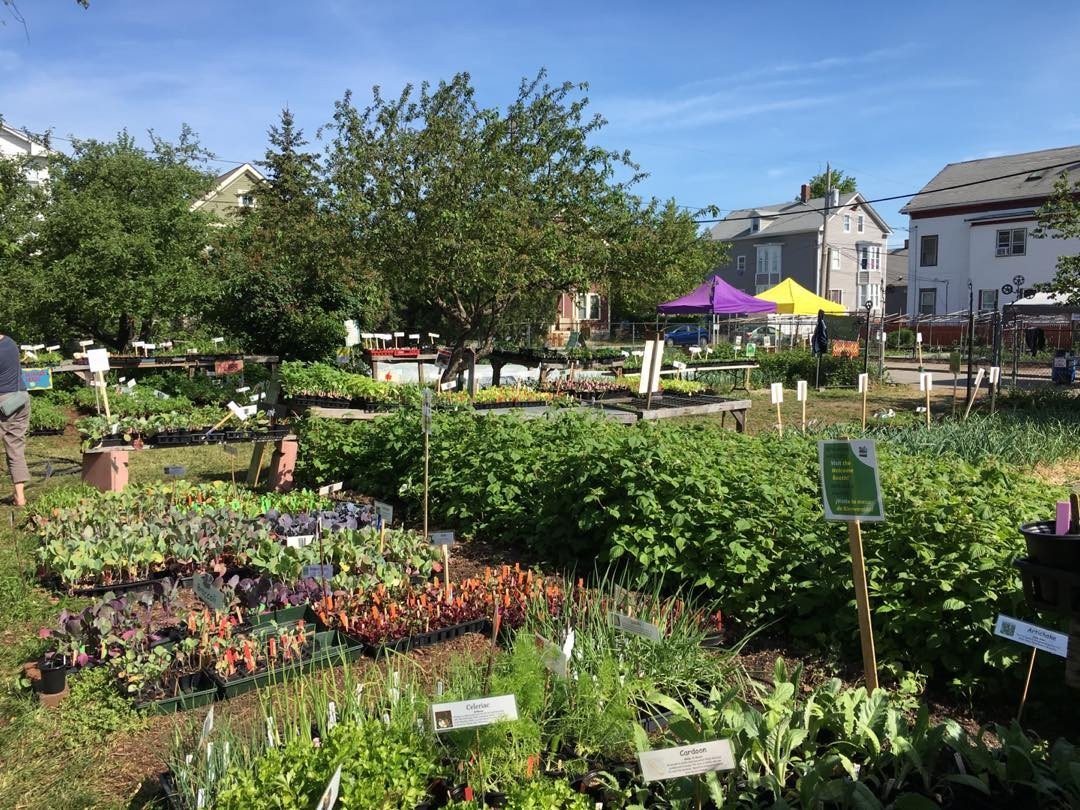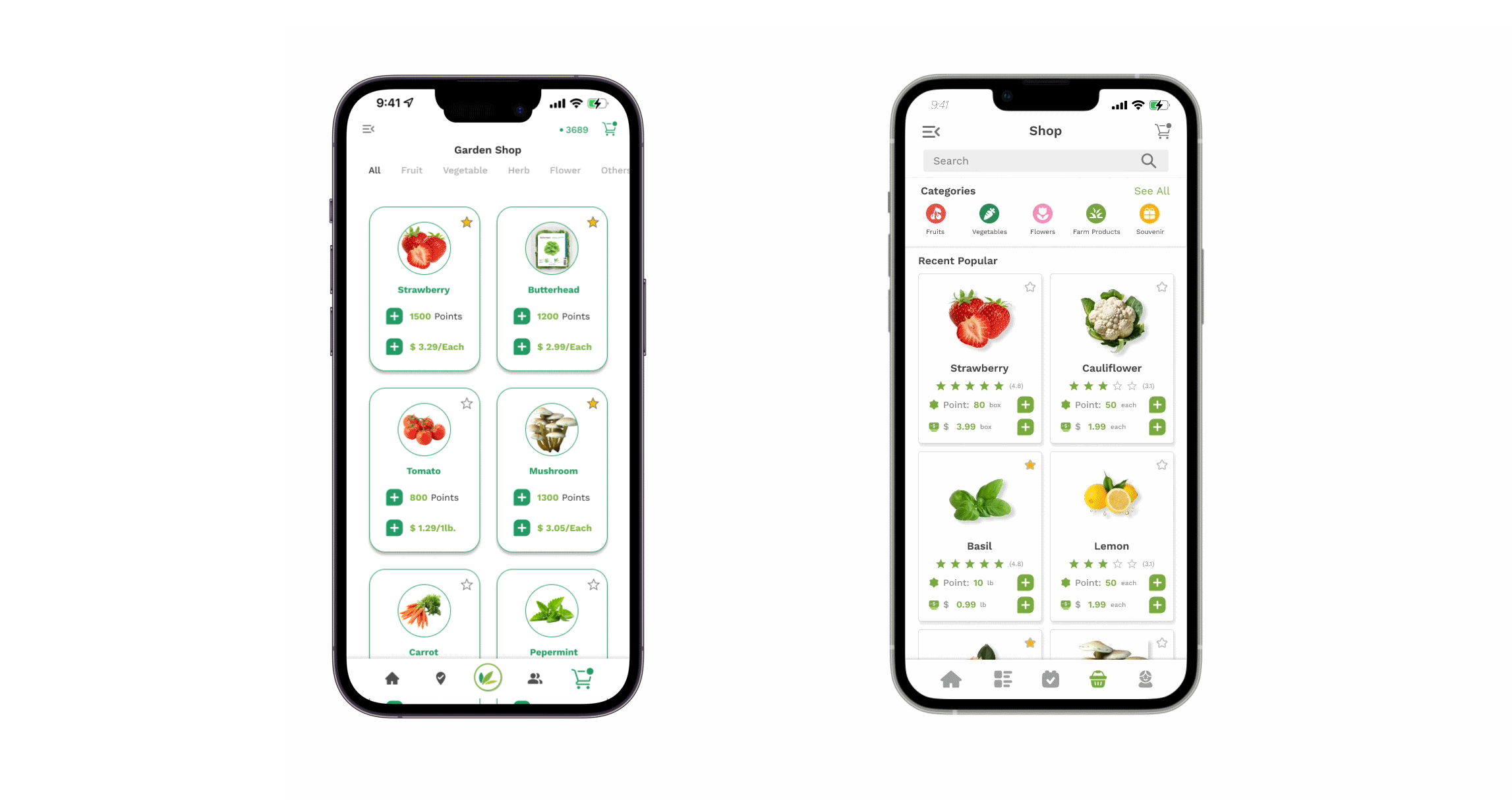
Rhode Island Community Garden APP
Smart & Interesting local application for a Non-Governmental Organization to re-build farming, community and lifestyle
I've been invited by the SCLT organization to volunteer as a UI/UX designer, where I'm actively involved in developing a mobile app to support the design and construction of a new service system for this NGO.
My Role
Duration
APP UI/UX Design 3 month
UIUX Design, Marketing Analysis, Service Design, Branding Design
Scope
Tools
Photoshop
Illustrator
Miro
Figma
Client Organization
Procreate
ArcGIS
Southside Community Land Trust
Team
Sirui Li UI/UX Design, Service Design, Branding Design
Andy Pan Planting Advisor
Awards
OVERVIEW
The first party involved in this project is the real-world initiative of the community NGO organization, SCLT (Southside Community Land Trust), based in Rhode Island. Their mission revolves around transforming idle or abandoned community land into vibrant gardens for cultivating and sharing vegetables and fruits.
However, due to limitations in their outreach and service offerings, there has been a persistent gap in establishing a sustainable platform for communication between the organization's community gardens and the local residents, as well as a lack of impetus for continuous growth. Consequently, the primary challenge of this project lies in creating a sustainable communication and service framework through UI/UX design while streamlining a service system conducive to ongoing development.
Background
The goal is not just to create a functional tool, but to build a digital extension of the newly redesigned community garden and the new sub-brand design. The user experience should evoke the same sense of community and service that are at the core of the project, facilitating interaction while also encouraging active participation within the community.
Goal
Impact Expectation
A Mobile App
An Efficient & Comprehensive Service System
RESEARCH
As the SCLT evolves, it's essential to keep the needs of our community at the forefront of our development strategy. With a diverse range of services on offer and limited budget due to our non-profit nature, the challenge lies in understanding and balancing the needs of the organization and the residents we serve. As a UX researcher, I am dedicated to unpacking these needs, expectations, and experiences through comprehensive studies and user testing. By identifying gaps in our current management and understanding the lack of resident experience, I aim to contribute valuable insights that will inform the redesign of a more efficient and user-centric operating system.
Background
Through interviews with the manager of the SCLT organization, we learned that since its establishment, the public welfare organization has been continuously increasing the number of projects every year. Currently, the businesses within the projects are mainly divided into farms, gardens owned or managed directly by SCLT, and projects in cooperation with other communities. The majority of these are community cooperation projects, which mainly provide scientific guidance and management. The organization's goal is to provide more communities with clean, safe, and affordable food, while resolving the issue of vacant land that emerges in urban development. More and more residents join in organization and 15 public markets have begun selling their agricultural products.
Data Research
The SCLT Services Mapping
What are the issues encountered during promotion and development?
Through accumulated data analysis, the expansion and development of venues over the years have not been fast. Moreover, they are mostly concentrated in certain areas and communities, and there has not been a large growth in new communities participating. The reasons for this could be:
There is not enough manager.
It's difficult to disseminate information, making it hard to promote community garden projects.
The integration between the community and the SCLT organization is insufficient, leading to poor sustainability.
Why is the growth in local residents' participation slow?
The data shows that although collaboration with local agricultural markets has allowed more people to eat food produced by the organization, it hasn't significantly promoted the brand. Despite maintaining educational cooperation projects with schools, there hasn't been increased participation from more schools and students:
The yield and variety of agricultural products are not sufficient.
No more events or activities for children or local residents
After in-depth research, I found and narrowed down my target group and created user personas to describe their needs and frustrations.
Personas
Although the organization has been operating in the Rhode Island area for many years, traditional communication methods and project management approaches have not effectively promoted and expanded this excellent project. There is a lack of a link or platform between residents and the organization to enhance the overall project operations. As a product designer and service designer, I aim to develop an application that can better facilitate the entire service system and foster closer connections between residents and the organization
Locate Problems & Set Goals
SOLUTIONS
We've undertaken a complete redesign of our service system, considering the current operational processes of our organization. This involves identifying opportunities for increased interactivity at each stage of the user journey. But our focus isn't solely on providing a better service system. This interactive product is designed with an emphasis on improving user experience within the community garden and streamlining their activities. We believe that by focusing on these areas, we can enhance overall engagement and make the garden more accessible and enjoyable for all community members.
Service Design System | Operation Model Map
Service Design System | Service Blueprint Map
I want that new service system can continuously attract community residents and also play a significant role in community.
DESIGN PROCESS
User Flow & Information Architecture
Wireframe
Hi-Fi Screens - First Version
User Testing
After the first version of the product was released, I conducted usability testing of the online prototype with targeted users and organization managers. I introduced the new features, usage methods, and benefits of this product.
Feedbacks From Targeted Users and Managers
Based on the feedback from the target users, I iterated on this product. This is an essential challenge for the product to mature and, at the same time, it will enhance the overall service system's performance through this app.
Iteration
Iteration@1 - Finding a suitable garden and booking land
Iteration@2 - Finding a suitable garden and booking land
A clearer and more concise categorization for adopting gardens
Revamping task posting and sharing interactions for improved ease of use and understanding
Visualized tracking of your agricultural product information
First Version
After Iteration
Iteration@3 - Inspiring events you can explore in garden
A more concise holiday information interface to engage users.
Providing more detailed descriptions.
First Version
After Iteration
Iteration@4 - Clear task guidance and market
Clear info visualization of tasks
More gamified task guidance and interactive feedback.
First Version
After Iteration
Iteration@5- More clear and detailed shopping path
First Version
After Iteration
UI DESIGN
I am tasked with integrating a series of unique illustrations based on our garden and farm into our digital platform. Each illustration serves a dual purpose: it offers a choice of planting styles for our users, and it contributes to forming a distinct visual style that reflects our organization's identity. My challenge lies in designing a user-friendly and intuitive interface where users can easily navigate and select their preferred planting styles. Simultaneously, I need to ensure that the distinctiveness of our visual style is not only maintained but also accentuated throughout the entire user journey within our platform.
Illustration Design
Logo Design
The concept of the new logo comes from a newly sprouted plant, symbolizing a vibrant future life.
Special Event Icon
To increase user engagement with the organization, we are creating more special events. Therefore, we've designed some logo-transformed icons to be used on special holidays, shaping a more dimensional brand image.









































